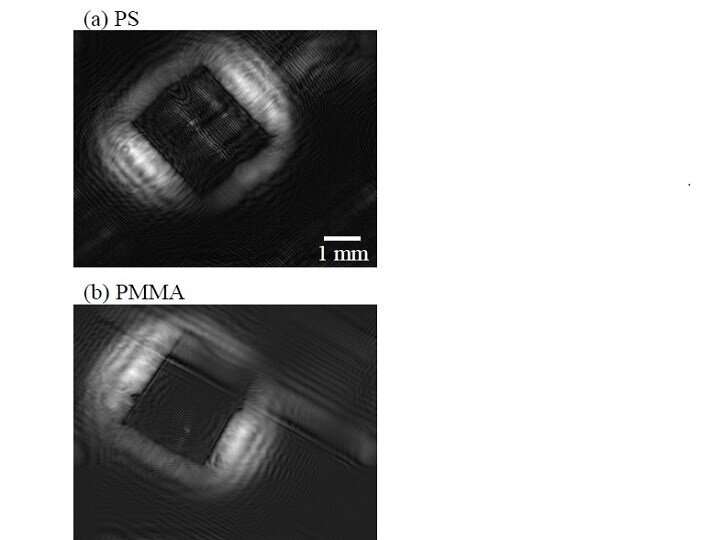Light-based system lays foundation for continuous monitoring of ocean plastic particles

Researchers have developed a new light-based method for identifying plastic particles in large volumes of water. The new system could help scientists better understand how tiny particles get distributed deep in the ocean.
"The approach we demonstrate paves the way for long term, global scale analysis of marine particulates and microplastics using large networks of observation platforms, such as floats or gliders," said research team member and lead author Tomoko Takahashi from the Japan Agency for Marine-Earth Science and Technology. "Such networks can enable changes in the distribution and abundance of deep-sea particles to be tracked over time at high-resolution. This information can provide new insights into how marine particulates microplastics get distributed in the deep sea."
In the Optical Society (OSA) journal Applied Optics, the researchers report how they combined high-resolution holographic imaging with the chemical information available from Raman spectroscopy to create an on-site, or in situ, sensing method that could one day be used to detect, identify and measure the distribution of particles found in the ocean without any sample preparation or manipulation.
"So far, it has only been possible to measure the bulk distribution of particles in situ," said Takahashi. "To understand the distribution of specific types of particle, we need to be able to resolve their shape and composition with enough sensitivity to detect just a few particles in a liter of seawater."
Combining imaging and spectral information
Today, studying particles in the ocean typically requires collecting particles that have accumulated in a filter or trap and then taking these to a laboratory for analysis. This is expensive because it requires sending ships and sophisticated underwater vehicles to remote areas of the ocean, often multiple times over a period of months or years. Even then, the approach only reveals what is occurring at a few discrete locations over a fixed period of time.
To accomplish continuous monitoring, the researchers developed a compact laboratory setup in which a single laser beam was sent through a channel of seawater several tens of centimeters long. When a particle passes through the channel, it interacts with the light and generates an optical interference pattern that can be used to determine the shape of the particle with high resolution. A small proportion of the light also interacts with the particle at a molecular level, changing the wavelength of the light and leaving a spectral fingerprint that can be used to detect the composition of the particle.
The researchers used their setup for recognition and chemical identification of two types of plastic particles. This demonstrated the system's ability to identify plastic particles in a large water volume morphologically and chemically while expending little energy.
Toward long-term observations
"Being able to combine these methods in a compact, low energy setup is important for future applications of this sensing method using long endurance, mobile robotic platforms in the ocean," said Takahashi. "Our technique can also be used to observe organic particles, such as plankton and inorganic minerals, which can help provide important insights into nutrient and other chemical cycles in the ocean."
To move closer to their long-term goal of a system for continuous ocean observation, the researchers are working to increase the sensitivity of the instrument and fully automate data acquisition and analysis. Because the communication bandwidths for remote locations at sea are too low to transmit raw images and spectra, it will be important to reliably determine the particle type at the point of observation so that only the processed results need to be transmitted to shore.
More information: Tomoko Takahashi et al. Identification of microplastics in a large water volume by integrated holography and Raman spectroscopy, Applied Optics (2020). DOI: 10.1364/AO.393643
Provided by The Optical Society





















